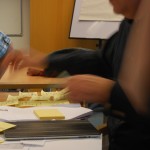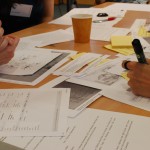Peer-reviewed article 'From tagging to theorizing: deepening engagement with cultural heritage through crowdsourcing' published in Curator journal
Proof copy available at http://oro.open.ac.uk/39117/.
Abstract: Crowdsourcing, or “obtaining information or services by soliciting input from a large number of people,” is becoming known for the impressive productivity of projects that ask the public to help transcribe, describe, locate, or categorize cultural heritage resources. This essay argues that crowdsourcing projects can also be a powerful platform for audience engagement with museums, offering truly deep and valuable connection with cultural heritage through online collaboration around shared goals or resources. It includes examples of well-designed crowdsourcing projects that provide platforms for deepening involvement with citizen history and citizen science; useful definitions of “engagement”; and evidence for why some activities help audiences interact with heritage and scientific material. It discusses projects with committed participants and considers the role of communities of participants in engaging participants more deeply.
The article was based on my keynote: 'The gift that gives twice: crowdsourcing as productive engagement with cultural heritage' for 'The Shape of Things: New and emerging technology-enabled models of participation through VGC' at the School of Museum Studies, University of Leicester.
If you found this post useful, you might be interested in my book, Crowdsourcing Our Cultural Heritage.

